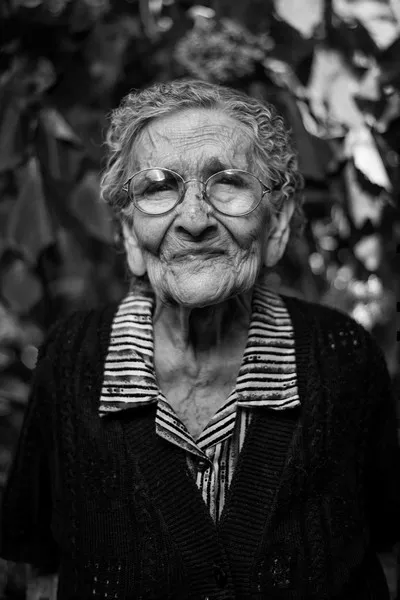Table of Contents
- Examples of Ageism in the Workplace
- Examples of Ageism in Healthcare
- Examples of Ageism in Media Representations
- Examples of Ageism in Family and Social Relationships
- Societal Implications of Ageism
- Conclusion
Ageism, a form of discrimination based on a person’s age, has significant social implications that can affect individuals across various stages of their life. Although it is commonly associated with the elderly, ageism can impact people of all ages, from teenagers to older adults. In sociology, ageism is explored to understand how societal norms, values, and structures contribute to discriminatory attitudes and behaviors based on age. This article will delve into examples of ageism, highlighting how it manifests in different social spheres, including the workplace, healthcare, media, and even in family dynamics.
Examples of Ageism in the Workplace
Employment Barriers for Older Adults
One of the most prominent areas where ageism occurs is in the workplace. Older adults often face discrimination when it comes to hiring, promotions, and even retention. Employers may perceive older employees as being less adaptable, resistant to change, or unable to learn new skills, particularly in industries that prioritize technological innovation. This can lead to older adults being excluded from the job market or being pushed into early retirement.
Despite possessing valuable skills and years of experience, older adults may find that they are being passed over for opportunities in favor of younger candidates. This form of ageism is partly driven by stereotypes that equate youth with innovation and productivity, while viewing age as synonymous with obsolescence.
Older workers are also more likely to experience layoffs during economic downturns, as they are often perceived as more expensive due to higher salaries and healthcare costs. This economic-based ageism further marginalizes older adults, pushing them out of the workforce earlier than they may have planned or desired.
Ageism Against Younger Workers
While much of the focus is often on ageism against older adults, younger workers also experience discrimination. Employers may view younger employees as inexperienced or immature, leading to fewer opportunities for leadership roles or career advancement. This can result in a lack of job security and fewer chances for professional growth for young people trying to enter the workforce. In many cases, young employees are not taken seriously, which can hinder their ability to contribute meaningfully to their organizations.
Younger workers may also be subjected to precarious employment conditions, including low wages, temporary contracts, and limited benefits. These conditions are often justified by the assumption that young people are still in the “learning” phase of their careers and therefore do not deserve the same level of stability as older, more experienced workers. Such discrimination undermines the potential contributions of young workers and perpetuates a cycle of exploitation.
Examples of Ageism in Healthcare
Disparities in Medical Treatment for Older Adults
Healthcare is another area where ageism is particularly pervasive. Older adults frequently receive substandard medical care due to age-based assumptions about their quality of life or potential for recovery. Medical professionals may prioritize younger patients or assume that older adults are less capable of making decisions about their own health. For instance, symptoms in older adults are sometimes dismissed as simply being a part of aging, leading to underdiagnosis or delayed treatment of serious medical conditions.
In many cases, healthcare providers may be less likely to offer aggressive treatments or preventative care to older adults. This can lead to poorer health outcomes, as older patients are not provided with the same range of medical options as younger patients. Ageism in healthcare can result in a vicious cycle where the health needs of older individuals are minimized, contributing to a decline in their overall quality of life.
Youth-Centric Health Initiatives
Ageism in healthcare can also manifest as a lack of resources and attention for the health concerns of younger populations. For example, mental health issues among adolescents are sometimes minimized or attributed to hormonal changes, rather than being treated as serious conditions requiring intervention. Such attitudes can prevent young people from receiving the necessary care and support during critical developmental stages.
Moreover, public health campaigns and healthcare funding are often focused on issues that predominantly affect the middle-aged and elderly, such as chronic disease management, while neglecting the needs of adolescents and young adults. This lack of focus on youth health concerns further perpetuates age-based inequalities within healthcare systems.
Examples of Ageism in Media Representations
Stereotypes of the Elderly
The media plays a significant role in shaping societal perceptions of different age groups. Older adults are often portrayed in stereotypical ways, such as being frail, forgetful, or technologically incompetent. These portrayals contribute to the marginalization of older adults by reinforcing negative stereotypes and reducing their visibility in mainstream media. Rarely are older characters depicted as complex individuals with full lives; instead, they are often relegated to secondary roles that serve to emphasize their limitations.
Media portrayals also tend to focus on the challenges of aging rather than the positive aspects, such as wisdom, experience, and resilience. This lack of balanced representation contributes to the widespread societal perception that aging is synonymous with decline and loss, rather than a natural and valuable stage of life.
Youth Stereotypes and Unrealistic Expectations
Get the full article AD FREE. Join now for full access to all premium articles.
View Plans & Subscribe Already a member? Log in.





